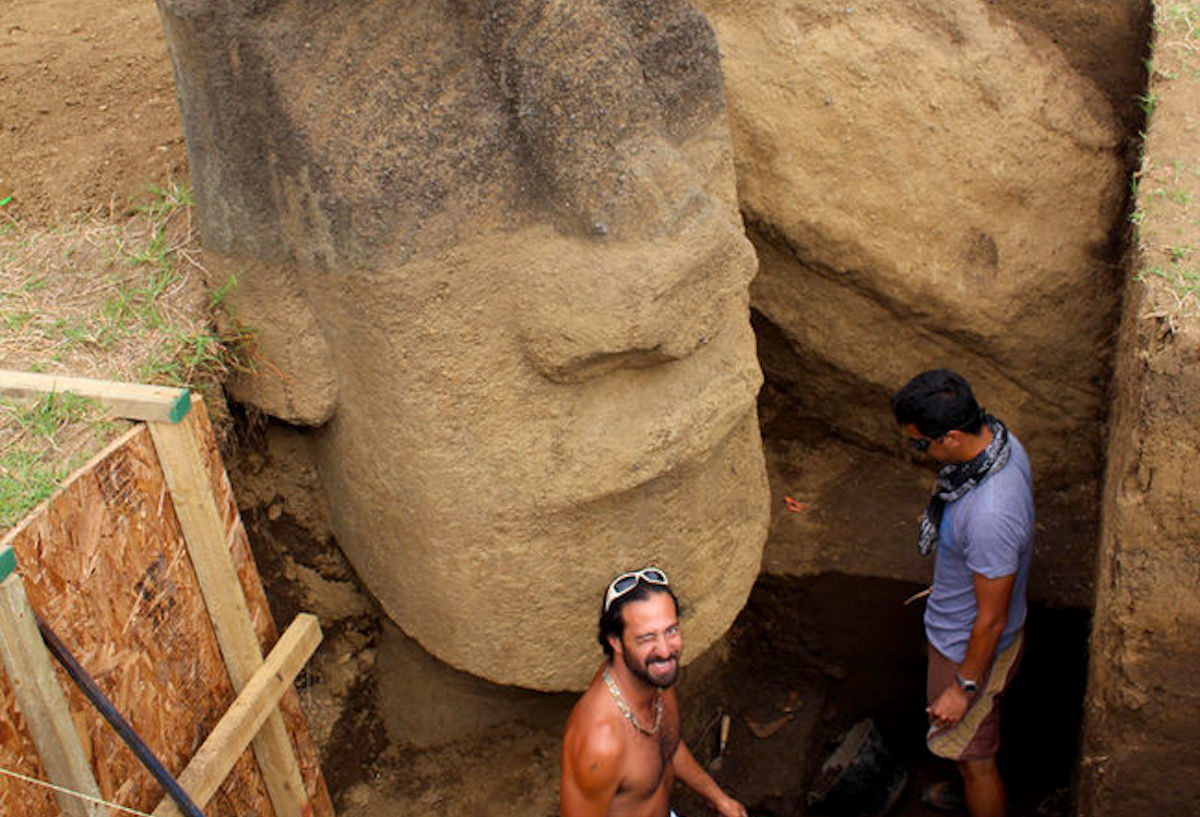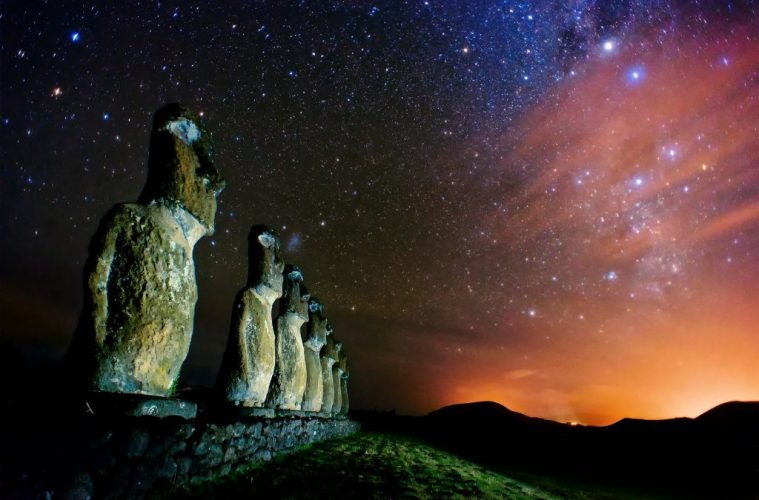
Call it the mysterious island or “the island with the heads,” or “the island with a peculiar name”, the truth is that this Island, not easily accessible by humans, has been shrouded in mystery for ages. But not anymore. A bunch of archeologists came close to finding what could be the true history and origin of Easter Island. Buried deep beneath the ground they found things which are mind-boggling.
Let’s Start With The Heads

Since ages, these ancient stone heads, known to us as Moai have confounded people. For a long time now, archeologists have been trying to find the origins of these constructions and understand why the construction halted. It’s one of those historical mysteries which is yet to be solved. What makes the history of Moai more interesting is the location of the island they are on.
Paro
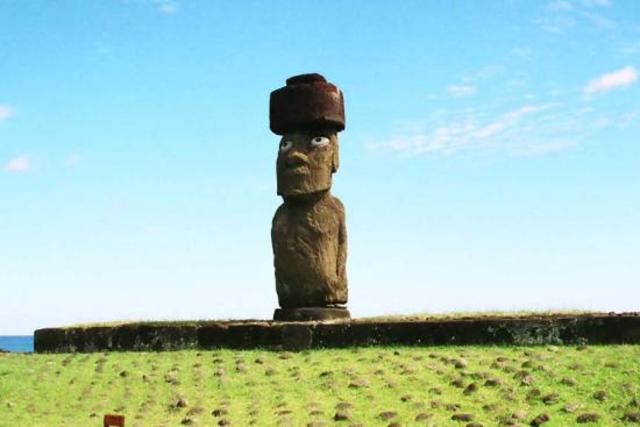
Recently, archeologists made a bizarre and groundbreaking discovery on the Easter Islands where all these Moai statues are. The discovery involved the height of the statues’ heads. Paro, the tallest Moai is 10m (33ft) tall and weighs 82 tonnes!
It is believed that the Moai has been on the Chilean Polynesian island since 1250 C.E.
A Strange Surprise Inside

A team of archeologists, part of Easter Island Statue Project decided to excavate a large number of Rapa Nui’s statues. The excavation project did not go in vain as the archeologists made some breathtaking discoveries about the history of these structures and how they might have come into existence. In the excavated structures was found a sort of a red pigment and the speculations are that it was this pigment that was used to paint the Moai.
Markings Revealed Everything

Some discoveries that the EISP made are mind-boggling. There was an intriguing relic found under one of the statues. Under the statue was a stone on which was a carving in the shape of a crescent. It is believed that it is a symbol of a canoe or vaka (a boat). The statue with which this stone was found has petroglyphs (a prehistoric carving on a stone) written on it. Van Tilburg (the person leading the project) and his team believed that these petroglyphs hinted to the history of the statues.
Pushing 14 Tons of Concrete
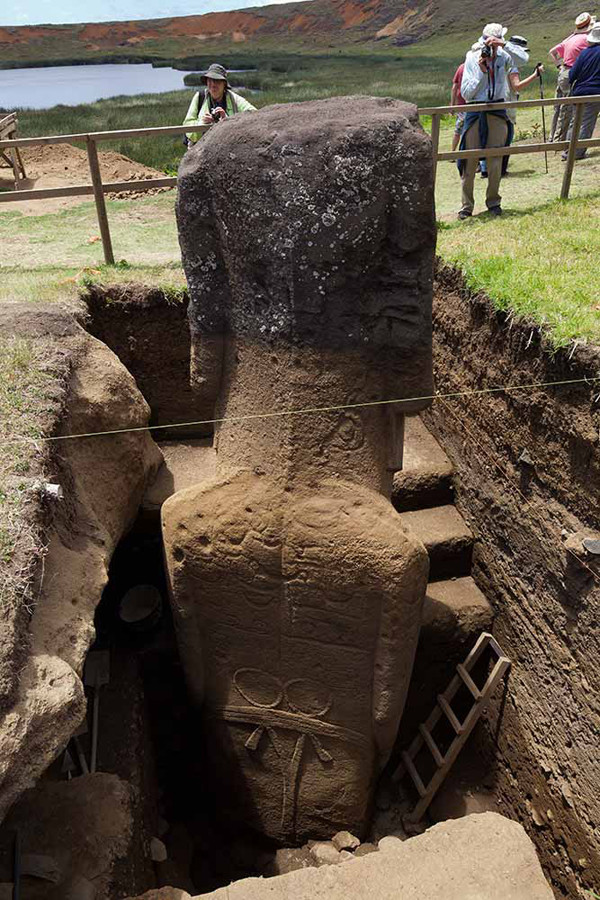
Exactly how the Moai were moved across the Easter Island has been ages long mystery. There have been numerous theories about the same. A simple one of them is that the statues could not have been moved without human labor and required minimum the help of ropes among other things. Another simplistic theory is that logs were used to roll the Moai to the desired location. If these theories were to be thought of practically then each structure would have required a labor of 50-100 people to move.
Impossible To Move?
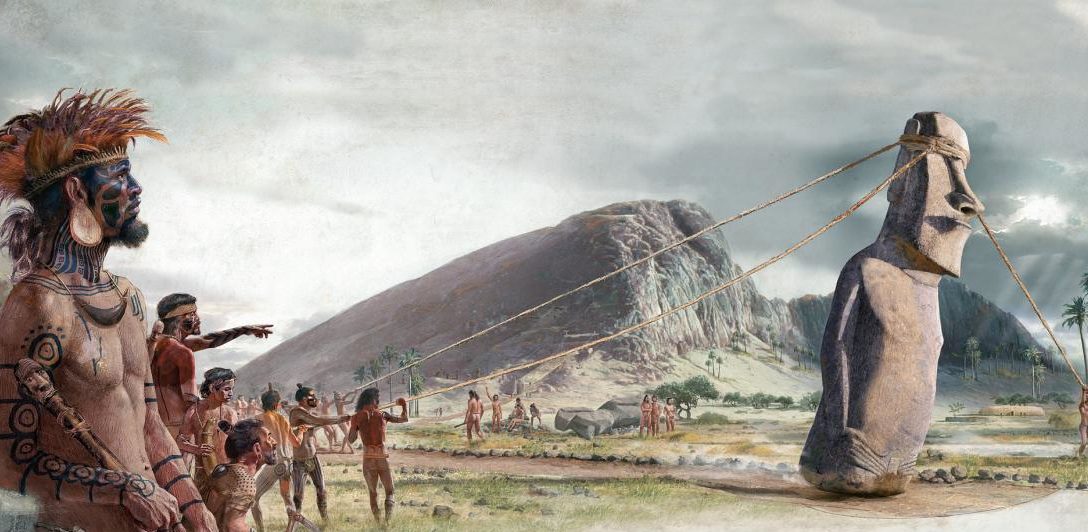
To test the validity of these theories a Czech engineer Pavel Pavel and a Norwegian adventurer Thor Heyerdahl collaborated and constructed a Moai from scratch. They tied one rope around its head and another around the base and then with the help of 16 other people they tried to cautiously move the statue. In the process, they found out that no matter how conscious they were, they were causing the statue some damage. So the exercise came to an end for the day. In order to not damage the statue, they had to move it 330 ft per day.

